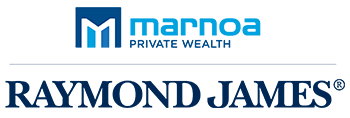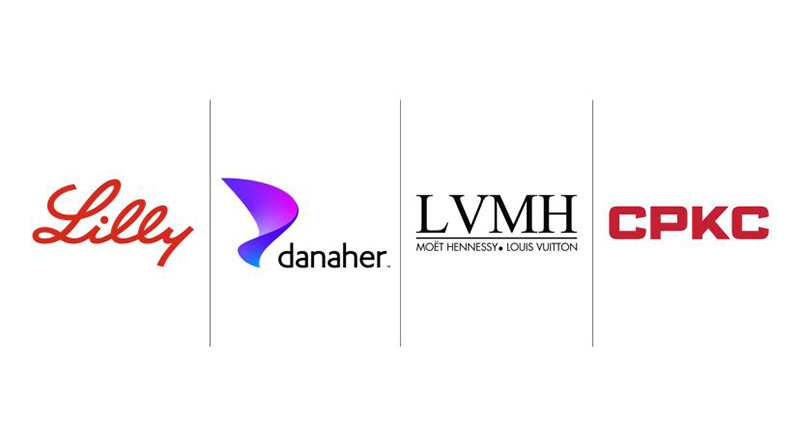Company Updates: Danaher, LVMH, Eli Lilly, and CPKC
Written by Christopher De Sousa, CIM® | Associate Portfolio Manager | www.marnoa.ca
DANAHER
Danaher indicated that some of their biopharma customers have returned to normal ordering patterns for instruments and consumables. This is supported by the 20% quarter-to-quarter uptick in customer orders in Q4. Nevertheless, Danaher has not yet seen a w idespread inflection in demand.
Inventory destocking remains to be a drag on the bioprocessing business. Customers are still working though inventories accumulated during the pandemic. Concurrently, emerging biotech firms continue to conserve capital. But the recent downward trajectory in interest rates suggests an impending improvement in biotech spending and VC funding. This bodes favorably for tool suppliers such as Danaher.
Danaher expects destocking in North America and Western Europe will be mostly completed by the second half of 2024. Book-to-bill remains in the 0.8-0.85x range but is expected to modestly step-up to 0.9x or higher in the latter half of 2024. Bioprocessing sales in the first half of the year are projected to look similarly to the second half of 2023—down mid-to-high teens. And then reaccelerate to mid-to-high single digit growth in the second half of 2024—followed by high-single digit growth or better as they exit 2024 and head into 2025.
We believe the negative destocking trends are temporary setbacks. In our view, it does not impact the long-term growth profile of the company or the large secular growth opportunities (e.g., gene and cell therapy) in the biopharma market. Last year saw a record number of FDA approvals for biologic and genomic medicines and the drug development pipeline is significantly more robust than at any previous point in history, according to Danaher CEO Rainer Blair.
(You can read our latest research on Danaher on our website here.)
LVMH Moët Hennessy Louis Vuitton
LVMH, the owner of luxury brands Louis Vuitton and Christian Dior, reported organic sales and net profit growth of 13% and 8%, respectively, in 2023. We maintain the view that LVMH will continue to deliver industry leading sales and profit growth in 2024 against the backdrop of normalizing global luxury growth. Over the last 35 years, LVMH has delivered an average organic sales growth of 9.1%. LVMH chairman and CEO Bernard Arnault stated that LVMH intends to maintain that growth rate over the long-term.
We continue to see broad strength across the group’s portfolio of brands. Louis Vuitton, Christian Dior, Celine, Fendi, Loro Piana, Loewe, and Marc Jacobs, all gained market share and achieved record levels of revenue and profits. LVMH reported double-digit organic sales growth in Europe (+13%), Japan (+28%) and the rest of Asia (+18%). While the U.S. saw organic sales growth (+4%), there was “softness” in luxury demand, and that particularly showed in sales in Q2 (down 1%) and Q3 (up 2%). What’s promising is the reacceleration in Q4 (+8%) with Sephora being a key contributor (+76%).
LVMH addressed concerns around the “slowdown” in Christian Dior’s growth rate. Christian Dior is still growing low double-digits after more than tripling in size over the past seven years. LVMH simply cannot keep up with the demand, and as a result, has restricted orders on certain items (e.g., Dior dresses). In our view, the slowdown is deliberate to focus on maintaining the brand’s desirability for the long-term. LVMH and other luxury brands such as Hermès employ such strategies to preserve their brands. Too much of something in the marketplace can dilute the desirability and brand equity.
In a call with analysts, Bernard Arnault highlighted that “growth must not be a goal. The goal is desirability. People must desire the brand, whether it's for Dior or other brands in the Fashion & Leather division. It's good to generate growth… But we've reached a stage such that we no longer need to have such high growth, and between 8% and 10% is perfect. We do more at [Louis]Vuitton too, but the goal isn't to generate growth at all costs.” We remain upbeat on LVMH and the luxury sector in 2024.
(You can read our latest research on LVMH on our website here.)
ELI LILLY
Did you know that about 74% of adults in the U.S. are overweight? According to the U.S. Centers for Disease Control and Prevention (CDC), that includes nearly 43% who are considered obese. In Canada, about 65% of adults are classified as overweight, with 30% of this group falling into the category of obesity. Obesity has become a global epidemic, leading to increased cardiovascular problems (e.g., heart disease, stroke, and heart attack), type-2 diabetes, some types of cancers, and reduced quality of life in general. Obesity costs the U.S. healthcare system about $173 billion annually.
Demand has been very robust for Eli Lilly's diabetes drug Mounjaro and obesity drug Zepbound—so much so that demand for these GLP-1 drugs continue to outstrip supply. In 2023, Mounjaro brought in sales of over $5 billion with solid sequential growth as more type-2 diabetes patients gain access to the drug. Following FDA approval in November, Zepbound launched in U.S. pharmacies in early December, generating fourth-quarter sales of $176 million. In 2024, Eli Lilly forecasts revenues to range from $40.4 billion to $41.6 billion, indicating an approximate 20% increase from the midpoint of this guidance. Mounjaro and Zepbound are expected to be meaningful contributors to long-term revenue and profit growth as they scale globally.
Eli Lilly stated that in the future, oral drugs, like orforglipron, will be key to supplying obesity and diabetes treatments at scale to satisfy global demand. The reason being is that oral capsules are easier to manufacture because of the less complicated nature of small molecule drugs compared to large molecule drugs (like Mounjaro and Zepbound). Orforglipron is a once-daily oral GLP-1 that is undergoing Phase 3 trials for the treatment of obesity and type-2 diabetes.
Eli Lilly has a solid pipeline of drugs in Phase 3 clinical trials—the most in the company’s history—with approximately 110,000 patients enrolled collectively. For example, some of the Phase 3 studies include the use of GLP-1s to treat sleep apnea and heart failure. Others include Phase 3 studies for donanemab, a monoclonal antibody for treating early Alzheimer’s disease, and lebrikizumab, a monoclonal antibody for treating eczema.
We think the growth runway for Eli Lilly is wide and long.
CANADIAN PACIFIC KANSAS CITY
CPKC is the combination of two railways—Canadian Pacific and Kansas City Southern—creating the first and only single-line transnational rail network that connects Canada, the U.S., and Mexico with access to ports and energy hubs on the Atlantic, Pacific and Gulf of Mexico.
While CPKC still remains the smallest of six U.S. Class 1 railroads by revenue, the combined company is operating a larger and more competitive network spanning 20,000 miles of rail in North America. We believe CPKC has the most attractive growth of the Class 1 railroads, with long-term (2024-2028) guidance calling for revenue to grow high single-digits and earnings per share to grow double-digits over the same 5-year period. CPKC has identified ~$5 billion in new revenue opportunities to support this growth, including route conversions (single-line hauls vs. connecting lines), truck-to-rail conversions (~1.8 million miles addressable truck market), and domestic near-shoring as businesses look to reduce their reliance on distant suppliers such as China.
It has been less than a year since CP and KCS combined on April 14, 2023. CPKC is still in the early stages of unlocking value from the revenue and cost synergies from KCS. CPKC is currently repricing a portion of CP and KCS contracts that were not renewed during the period of higher inflation in 2022 and 2023. These pricing actions, in addition to volume growth and KCS synergies, are expected to improve CPKC’s operating ratio in 2024. In the railroad business, the operating ratio is a measure of profitability that compares operating expenses to net sales. The lower the ratio, the more efficient and profitable the railroad.
Securing direct access to Mexico—one of the world’s major automotive hubs—represents a huge win for CPKC’s automotive business. Prior to the merger, CP was responsible for transporting vehicles over a distance of 100 to 200 miles to Detroit. From there, the cargo was transferred to rival American railroads, who would then carry out the remainder of the journey to Mexico. CPKC now has the capability to connect auto assembly plants and distribution centers to major hubs such as Mexico, Detroit and Ontario. Single-line hauls are just one of the many benefits from the CPKC transnational rail network. Furthermore, CPKC expects intermodal transit times to be more competitive than long-haul trucking alternatives.
Overall, we think the merger will create significant value for CPKC—but more importantly—the primary beneficiary will be the customer, who stands to gain considerable value.
Please click on the button below to subscribe to our mailing list.
By subscribing, you will get regular commentary about our portfolio holdings, market outlook, financial planning, and events. You can withdraw from receiving emails at any time by unsubscribing.
Disclaimer
Information in this article is from sources believed to be reliable; however, we cannot represent that it is accurate or complete. It is provided as a general source of information and should not be considered personal investment advice or solicitation to buy or sell securities. The views are those of the author, Christopher De Sousa, and not necessarily those of Raymond James Ltd. Investors considering any investment should consult with their Investment Advisor to ensure that it is suitable for the investor’s circumstances and risk tolerance before making any investment decision. Raymond James Ltd. is a Member Canadian Investor Protection Fund.




